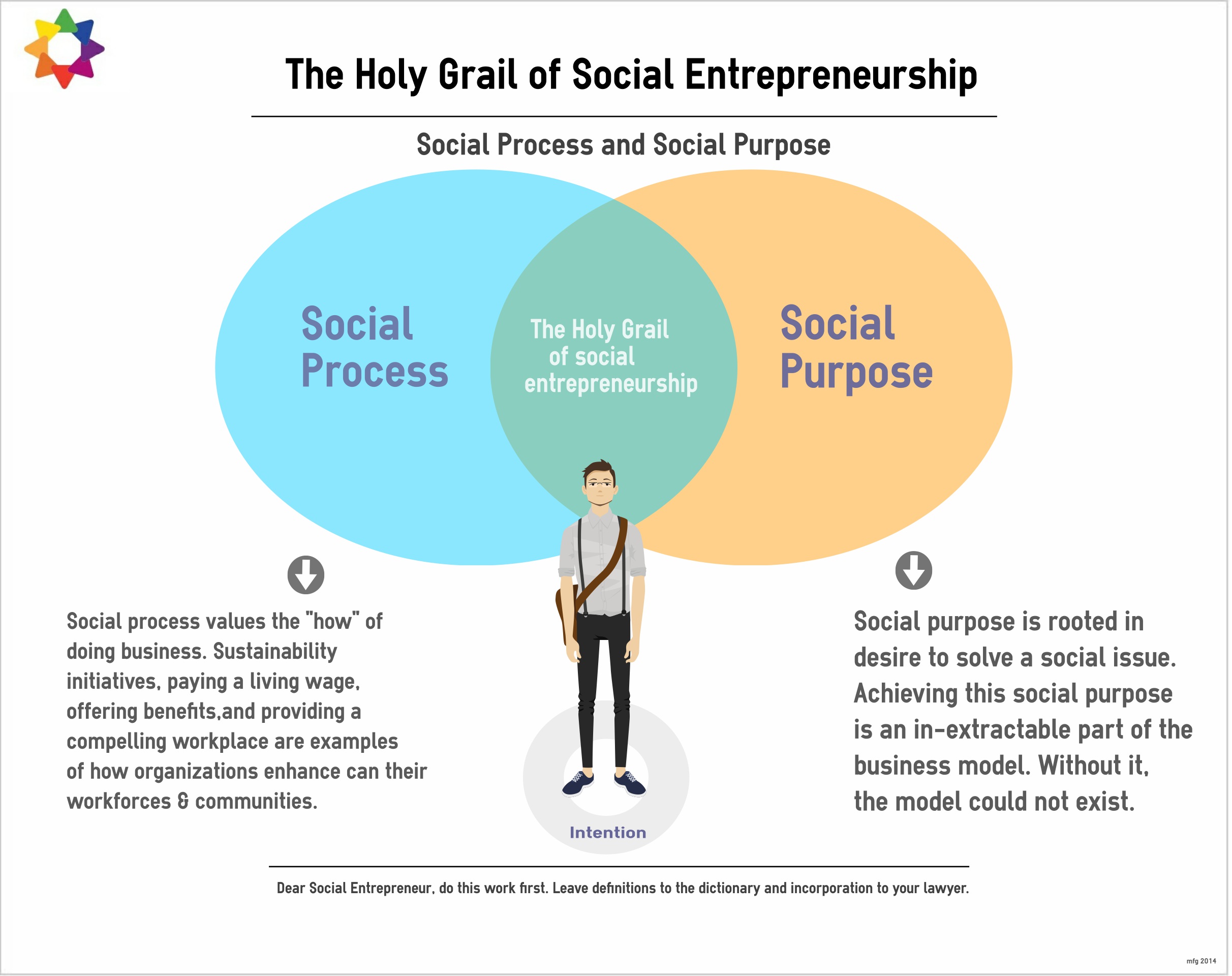
Governance and Collective Impact
Written: by Liz Weaver, Vice President – Tamarack, an Institute for Community Engagement Revised on January 26, 2015 By now we know that collective impact

Written: by Liz Weaver, Vice President – Tamarack, an Institute for Community Engagement Revised on January 26, 2015 By now we know that collective impact

We’re often asked for our definition of social entrepreneurship.
In the past three years, our answers have morphed. We started purely on the non-profit side, but encountered problems whereby “everyone” was becoming a social entrepreneur. As we shifted toward the for-profit side, we started to rub up against CSR and social-washing concerns. Instead of broadening our ability to discuss the possibility of social entrepreneurship, we found ourselves increasingly walled within incorporation definitions.
A long time ago, I argued for our ability to hold the broadest definition of social entrepreneurship that we possibly could – so that we might experience and learn from the models holding the greatest yields. And yet, over time, I have found myself sniffing for flaws in business model construction.
“Is that really social impact?”
“Is selling to government actually a market opportunity?”
“Does receiving a subsidy take away the sparkle of the idea?”
Last spring, I joined the Futurpreneur Canada Action Roundtable in Calgary to discuss the needs of advancing entrepreneurship across the country. I listened to entrepreneurs describe their dedication to the community, to their employees, and to creating an organization that was more than just about business (that was about more than just business). They talked about living wages, volunteer days, health benefits, professional development, community engagement, and employee ownership.
When asked as to whether these elements equaled social entrepreneurship, my gut was no, but my head kept asking “why not”? In short, social change was not the goal.
However, when I have looked at social enterprise models with social as the goal, often I am confounded by the use of volunteers or beneficiaries as “staff” or government as the sole purchaser. There may well be social purpose to these organizations, but they lack the elements described above – the social process.
Social process: Values the “how” of doing business. Sustainability initiatives, paying a living wage, offering benefits, and providing a compelling workplace are examples of how organizations can enhance their workforces and communities.
Social purpose: Roots itself in the desire to solve a social issue. Achieving this social purpose is an in-extractable part of the business model.
Without it, the model could not exist.
Unpacking these concepts required us to start from one vantage point, not definitions, not incorporations, not business models, but rather from “intentionality”.
If we started back at square one, at the point of intention, how should a social entrepreneur start building their business model.

The mantra for transformative change has become ubiquitous. After all, who would opt for treating symptoms, often derisively labeled as band-aids, over striving for a cure? While the clarion call of transformation also beckons for us, we’re concerned by a dynamic emerging between individuals taking community action because they saw a “simple” need (kids need shoes, women shelters need soup) and the analysis of those actions by those who call for transformative change. Whether these interventions come through the lens of philanthropy, humanitarianism, or economic development and regardless of whether they are individual actions or those taken by organizations, we risk losing much by judging all social initiatives against the standard of transformation.

Rural communities have unique ways of addressing key challenges such as distance, size of market, lack of infrastructure and services, out-migration of youth, and the

In many ways Quebec is a leader in developing social enterprises and its social impact sector. Attendees were able to hear lessons learned from a

Borders are not just geographic. Attendees learned from unlikely partners who have joined together to create social change and innovation. This session was moderated by

A great idea takes great implementation and working across borders (any border) is not always easy. Theory only gets you so far when managing beyond

Labs are an emerging way tackling complex challenges. This panel addressed how they are using this approach in their country and how social enterprises can

Corporations are moving from writing cheques to supporting social purpose work to doing it themselves. SEWF 2013 heard from a panel of experts working in

This session was moderated by Eva Friesen, President and CEO, The Calgary Foundation and featured: Lucy Bernholz, Visiting Scholar, Stanford University Center on Philanthropy and